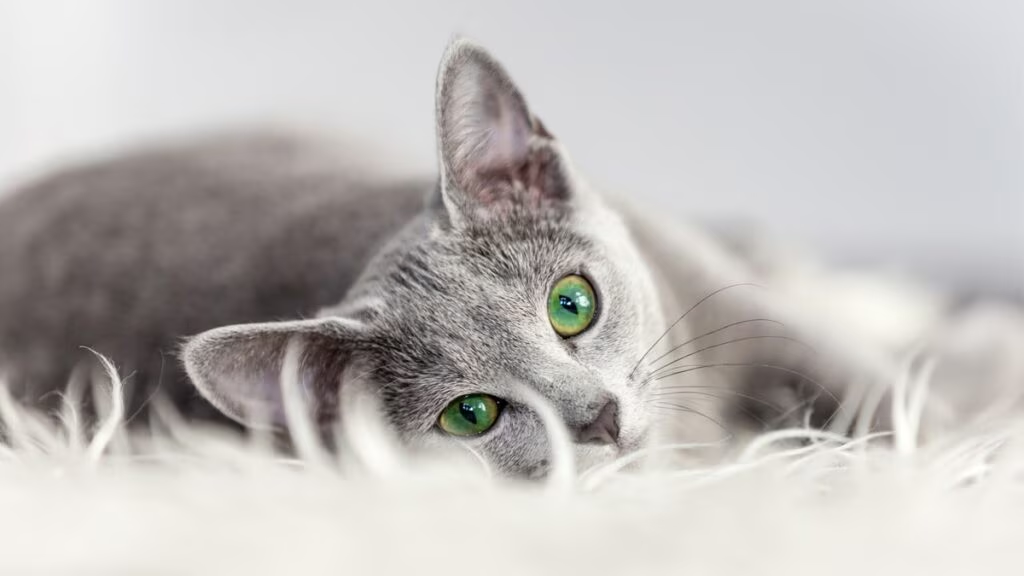Grey cats are more than just beautiful animals; they carry a quiet charm, a soothing elegance, and an air of mystery that captivates cat lovers everywhere. From their smoky fur to their often striking eyes, these cats have a way of standing out, even in the most colorful households. Whether someone is thinking of adopting one or already shares their life with a grey feline, understanding their unique traits, personalities, and care needs is essential.

What Makes Grey Cats Unique?
Grey cats, sometimes referred to as “blue” cats in breed standards, owe their distinct color to a dilution gene that mutes black fur. This creates a spectrum of grey shades, from soft silver to rich charcoal tones. But it is not just their color that is intriguing; many grey cats also boast plush coats, mesmerizing eyes, and gentle temperaments.
Learn more about: Cat paws
Breeds Commonly Found in Grey
Several cat breeds commonly feature grey as one of their primary coat colors. Each has its own charm and personality traits:
Russian Blue
Known for their short, dense double coat and brilliant green eyes, Russian Blues are graceful and intelligent. They tend to be shy around strangers but form strong bonds with their human families.
Chartreux
This rare French breed is stocky with copper or gold eyes and a woolly grey coat. They are quiet, affectionate, and make excellent companions.
British Shorthair
With a chunky build and plush coat, this breed is friendly and calm. The classic “British Blue” is a well-known variety of this breed.
Nebelung
This long-haired breed resembles the Russian Blue but with a silky, flowing coat. They are loyal, quiet, and prefer routine in their environment.
Korat
With roots in Thailand, the Korat stands out for its unique heart-shaped head, vibrant green eyes, and shimmering slate-colored coat. They are active, intelligent, and affectionate.
Grey Cats and Their Personalities
Although personality is often shaped more by breed and environment than fur color, many owners of grey cats report that their feline companions are particularly gentle and affectionate. That said, each grey cat is an individual.
Some are calm and reserved, while others are playful and vocal. What many grey cat guardians agree on is that these felines tend to form strong emotional bonds and thrive in loving, stable homes.
Grey Kittens: What to Expect
When adopting or purchasing a grey kitten, people often find themselves drawn to the silvery fur and soft features. However, just like any kitten, a grey kitten needs proper care, socialization, and a safe environment to grow into a confident adult cat.
Early Socialization
Introducing a grey kitten to various sounds, people, and other pets during the first few months helps shape a well-adjusted cat. This period is also the best time to begin gentle grooming habits and regular handling.
Kitten Nutrition
A high-quality kitten diet supports growth, brain development, and strong muscles. Grey cats, especially those from specific breeds like Russian Blues or Chartreux, may benefit from food formulated for their coat health.
Caring for a Grey Cat: Essentials
Whether long-haired or short-haired, grey cats benefit from regular grooming, a balanced diet, and routine veterinary care.
Grooming Tips
- Short-haired greys like the British Shorthair typically need weekly brushing.
- Long-haired greys such as the Nebelung may require brushing several times per week to avoid matting.
- Use a soft-bristled brush to keep the coat sleek and reduce shedding.
- Dental and Nail Care
Just like all cats, grey cats need:
- Regular tooth brushing (ideally several times a week).
- Trim their nails every 2 to 4 weeks to prevent them from becoming too long or causing injury.
Health Considerations in Grey Cats
- Grey cats do not have unique health concerns solely due to their color, but breed-related issues may apply.
- Russian Blues are generally healthy but may be prone to bladder issues.
- British Shorthairs can develop heart conditions like hypertrophic cardiomyopathy (HCM).
- One health concern in Korats is their potential to carry a genetic condition called GM1 gangliosidosis, which affects the nervous system.
- Regular checkups, weight management, and vaccinations are key to keeping any cat, grey or not, healthy and thriving.
Are Grey Cats Rare?
Grey is not the rarest cat color, but it is often seen as special. The dilution gene responsible for the coat color is not found in every breed, so when people see a grey cat, especially one with striking eye color or a velvety coat, they often take notice.
Some believe grey cats bring good luck, especially in cultures where the silver or blue hue symbolizes calm and protection.
Personality Myths and Color Stereotypes
It is common to hear that cats of certain colors act in specific ways, like black cats being mysterious or orange cats being mischievous. Grey cats are often described as quiet, intelligent, and loving, but it’s important not to let color-based stereotypes overshadow an individual cat’s personality.
Breed, socialization, past experiences, and environment play far more significant roles in shaping a cat’s behavior than fur color.
Grey Cat Adoption Tips
Planning to bring a grey cat home? Here’s what to keep in mind:
Choose Based on Temperament, Not Just Looks
It is easy to fall in love with a grey cat’s appearance, but prospective pet parents should spend time getting to know the cat’s temperament. Visit shelters or breeders, ask questions, and interact with the cat before making a decision.
Prepare the Home
- Set up a quiet space for the new arrival.
- Provide essentials like a litter box, food and water bowls, toys, and a scratching post.
- Use calming diffusers (like Feliway) to ease the transition.
Grey Cats in Pop Culture
From cartoons to Instagram, grey cats have made a mark in media. Some famous examples include:
- Tom from Tom and Jerry; a grey domestic shorthair who’s become an icon.
- Choupette, the pampered grey Birman cat of fashion designer Karl Lagerfeld.
- Many grey cats have become online stars, delighting followers on Instagram and TikTok with their cozy appearance and calm personalities.
Living with a Grey Cat: Real Owner Experiences
Many grey cat owners describe their feline companions as calming presences in their lives. Whether lounging on a windowsill or curling up beside their person after a long day, grey cats are often affectionate without being demanding.
Owners often share that these cats are observant, adaptable, and in tune with their household dynamics. They may not always be the center of attention, but their quiet loyalty makes them cherished companions.
Grooming for Beauty and Bonding
Regular grooming is not just for coat health; it is also an opportunity for bonding. Brushing a grey cat’s fur can be a calming routine that strengthens trust. It also helps keep an eye out for fleas, dry patches, or any skin conditions early on.
Some grooming tips:
- Use treats to make grooming a positive experience.
- Choose the right brush type depending on coat length.
- Be gentle, grey cats with plush coats can be sensitive to tugging.
Keeping the Grey Coat Glossy
To maintain that iconic silvery sheen:
- Feed a diet rich in omega-3 and omega-6 fatty acids.
- Offer plenty of fresh water.
- Ensure your cat is flea-free and not overgrooming due to allergies or stress.
Grey Cat Lifespan and Longevity
Most grey cats have average feline lifespans, 12 to 16 years, with proper care. Some breeds, like the Russian Blue or British Shorthair, are known to live even longer when given consistent veterinary care and a stable home environment.
Conclusion
Grey cats may not be the rarest, but they carry a timeless charm. From their elegant appearance to their diverse personalities, these felines make wonderful companions for cat lovers of all ages. Whether someone chooses a grey kitten or adopts a senior grey cat from a shelter, they are welcoming a friend filled with grace, warmth, and mystery.


Pingback: My Cat Has Dandruff: Causes, Treatment & Prevention Tips -